Mandala Artwork – An Artistic Way To Manage Stress
Mandala Artwork – An Artistic Way To Manage Stress
I love painting my canvas with a splash of colors. It rejuvenates me and makes me feel calm, composed, and relaxed. My first guru who introduced me to the world of colors and creativity is none other than my father. Later I got trained in basic art by my teacher Ujjwal Sir and the journey continued. A few art forms I learned from online classes and YouTube videos improved my choice of color, the stroke of a brush, and creative thought process.
Mandala is one such art form that I learned online. I found immense peace of mind when I devote my mind and soul to making one. A moment came in my life when I was in absolute depression but failed to express the anxiety and stress I was going through. Mandala came as a savior for me. It helped me overcome the stress, and I slowly and steadily moved ahead without any medication. Today I can proudly say that yes, Mandala art helped me to discover a new improved me who believes in myself and is confident. Why is Mandala known as an artistic medium to manage stress?
Let me take you on a tour to the world of Mandala.
People in today’s fast lifestyles have little time to stop and introspect on their emotional patterns. Many individuals are going through mental health issues like overthinking, anxiety, fear, etc. They are trying many methods but somehow cannot combat the pessimistic cycles.
I will not deny the fact that moments came in my life when I used to feel depressed and equally hopeless.
Hobbies indeed save people from getting in the loop of such mundane patterns. Particularly, when the hobby or inclination of a person is linked to art, it can help a great deal toward emotional stability. Such an artwork is a Mandala, which is much more than just a form of art.
What is Mandala?
The word Mandala has roots in Sanskrit, which means a discoid shape. The object is symmetrical and has a circular orientation. It has spiritual significance in Buddhism and Hinduism. People of ancient times began using Mandala as a tool of meditation and piousness. It is believed that Buddhist monks introduced Mandala artworks to other Asian nations through the Silk Route.
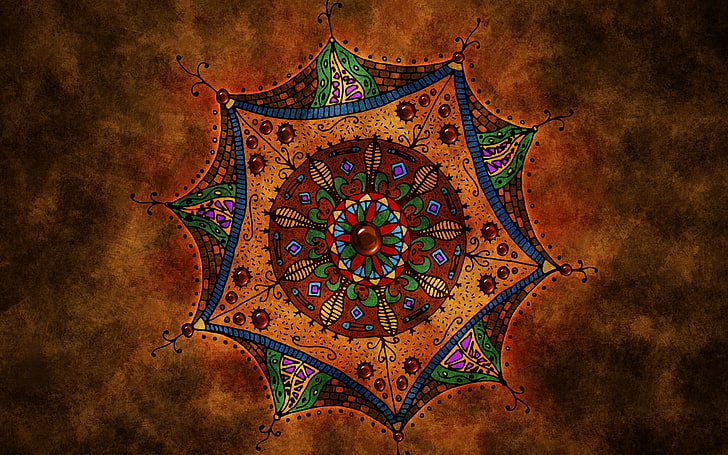
Later, Carl Jung, the pioneer of Analytic Psychology, leveraged Mandala’s artwork to heal his clients. He believed that the different aspects of this artwork could help one reach towards the unification of the self. The people would find emotional serenity while drawing the art forms. Jung could also decipher what his clients were going through inside by observing the patterns they drew during the therapy sessions.
The meaning of some colours and shapes used in Mandala artwork are as follows:
1. Green means hope and simplicity
2. Red denotes strength and passion
3. Yellow symbolizes willpower, wisdom, and happiness
4. Blue indicates serenity and respect
5. Squares stand for stability and balance
6. Triangles denote change and liveliness
7. Circles, the most important shape in the Mandala, symbolize our link with the universe
What are the Varieties of Mandala?
Mandala has numerous varieties of Hindu and Buddhist religious beliefs. However, the three prime categorizations of this artwork are as under.
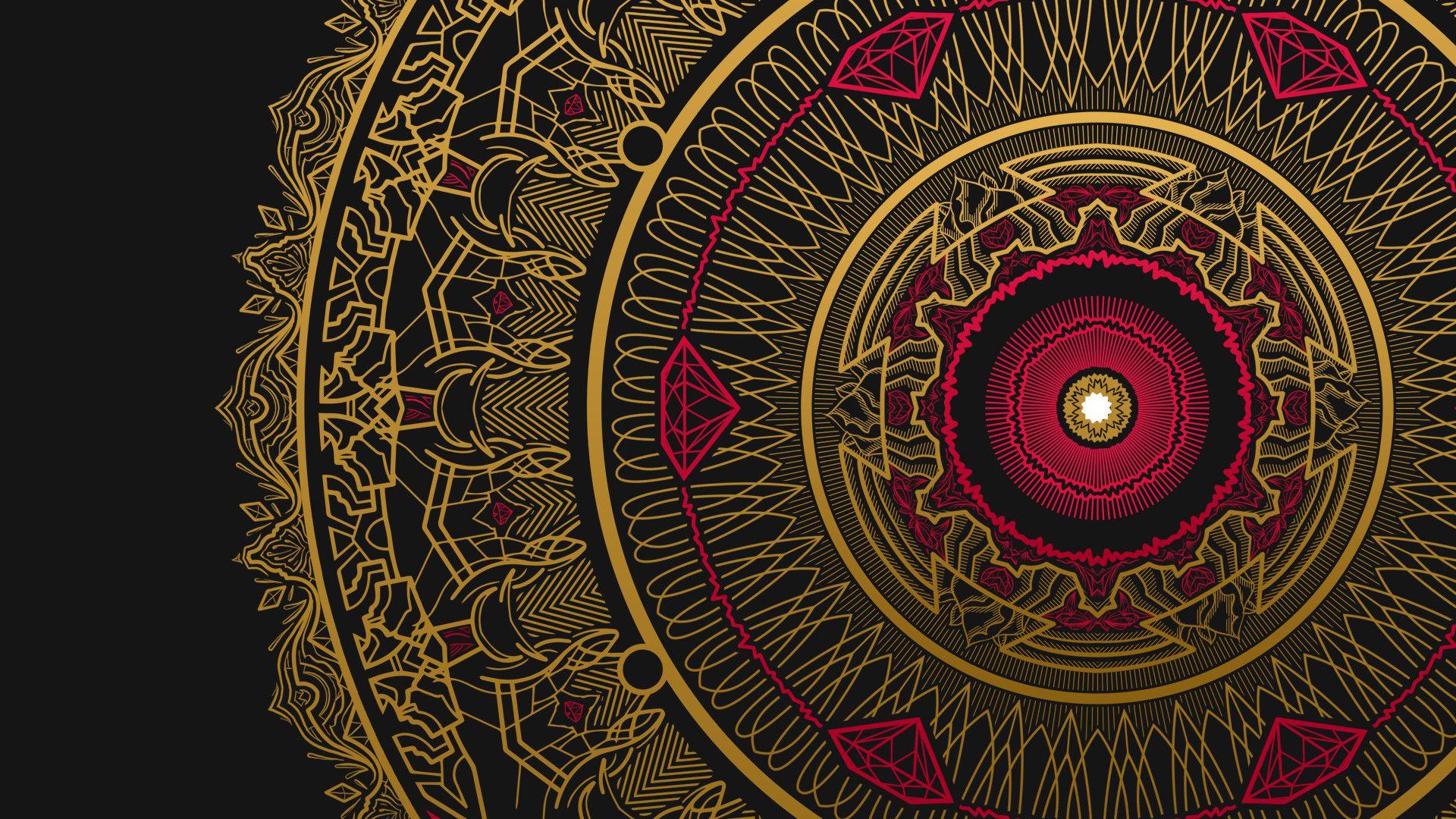
Healing Mandala – This type intends for self-introspection and discovering the truth about one’s existence. The individual feels relaxed and calm by channelling the energy towards a higher vibration. Working on a healing Mandala can be remedial if the person is undergoing any emotional turmoil.
Teaching Mandala – This form of Mandala aims to teach the various aspects, patterns, and meanings. It educates the people about the significance of the objects in philosophy and religion. It also teaches the students the art of visualization and mental mapping to create the Mandala.
Sand Mandala – This type has special importance in Buddhist culture, and monks have long used it as a religious element. They use sand to draw intricate designs, symbolizing that nothing is permanent, just like sand.
Outer Mandala – This kind represents the cosmos or universe, and Buddhists offer it to others as a symbol of thankfulness.
Mandala Colouring – An Artistic Therapy
Like any other form of colouring, Mandala artwork has various aspects and rules. The colours and shapes have different meanings, intending to reduce stress. Repeated colouring over symmetrical patterns allows the person to divert the mind from unwanted or mundane thoughts. Not thinking negatively naturally leads to a therapeutic process and enhances mindfulness.
A. The first step to creating a Mandala artwork is to choose the form and gaze at it to understand the patterns. The visualization process initiates the channelization of energy in a positive direction.
B. The next step is to create the Mandala using colours of one’s choice. There are no hard and fast rules to colour the artwork, and the individual can choose any shade to fill the object. The creativity and liberty while engaging in Mandala is its unique nature.
C. The choice of colour reflects one’s state of mind, and different colours have different meanings. Therapists observe the colours people choose and decide how to heal their emotional health. Mandala artwork is especially vital for kids to express their feelings through colours instead of words.
Why Mandala Over Other Forms of Colouring?
Artworks are a passion for some people or a profession for others. However, the subject art form is pretty unique with various reasons for learning Mandala. If anyone is interested in spiritual growth, this form of art can significantly help. Studies have shown that colouring Mandala art helps reduce anxiety levels, unlike colouring blank pages.
Mandala artwork has circular patterns and can represent any event of one’s life or the universe. Any natural episode comes in a circular or cyclic form, such as seasons, day and night, etc., and this artform perfectly characterizes the Brahmaand or universe we reside in.
Colouring a Mandala artwork can immensely enhance concentration as the patterns are circular. It is a therapeutic activity, unlike other forms of colouring. Colouring structured forms have a much more healing attribute than colouring a blank page. It helps the person introspect about life, nature, and the inner world while colouring the symmetrical items.
How Does Mandala Help in Managing Stress?
The source of any feeling in our mind is the thought we create. Each thought corresponds to a feeling, which then turns into a result at an emotional or physical level. Stress is the result of any negative or unpleasant thought we create.
When an individual works on Mandala art, the work gathers all the person’s attention. The person gets engrossed in colouring the piece with concentration and mindfulness. The mind gets so involved that it does not think of any other aspect at that time. The person focuses on colouring the intricate designs, and there is no scope to think of other waste thoughts.
Consequently, there are no negative mental patterns, resulting in relaxation and serenity. After completing the work, the mind and body naturally feel at a higher energy level due to the absence of mundane thoughts.
Benefits of Colouring Mandala to Manage Stress
In a world where almost, every being struggles with stress, Mandala is surely a saviour. It is an excellent tool to feel serene internally and can greatly manage stress. There are several benefits of colouring Mandala artworks, some of which are given below.
1. People can reflect on their lives and decipher the reason for their existence.
2. Studies have shown that Mandala artwork has helped people overcome past trauma. Engagement in drawing this art form led them to process the unpleasant events and eventually come out of the negative thinking.
3. The shape of the Mandala art has special significance in healing a negative mood. The circular aspects can uplift one’s mind and decrease pessimistic thoughts.
4. It is a brilliant method to relax and feel calm, thus can combat stress greatly.
5. Mandala has many physiological benefits as well. These include better sleep, managing blood pressure, activating feel-good hormones, lowering the stress hormone cortisol, etc.
6. The usage of vibrant or soothing colours can increase one’s creativity.
The world has witnessed a lot of upheavals to date and tried many methods to live happily despite the turmoil. Every human struggle to find some way or another to cope with daily challenges, especially on the emotional level. Colouring Mandala artwork is a fabulous technique to eliminate stress and other negative thinking patterns. People can get engrossed in the activity and stay away from unwanted thoughts. Be it for religious importance or spiritual progress, Mandala is just the right solution to attain peace of mind today.
This post is part of Blogchatter’s CauseAChatter
This blog post is part of the blog challenge ‘Blogaberry Dazzle’
hosted by Cindy D’Silva and Noor Anand Chawla
in collaboration with Zariya Healings.


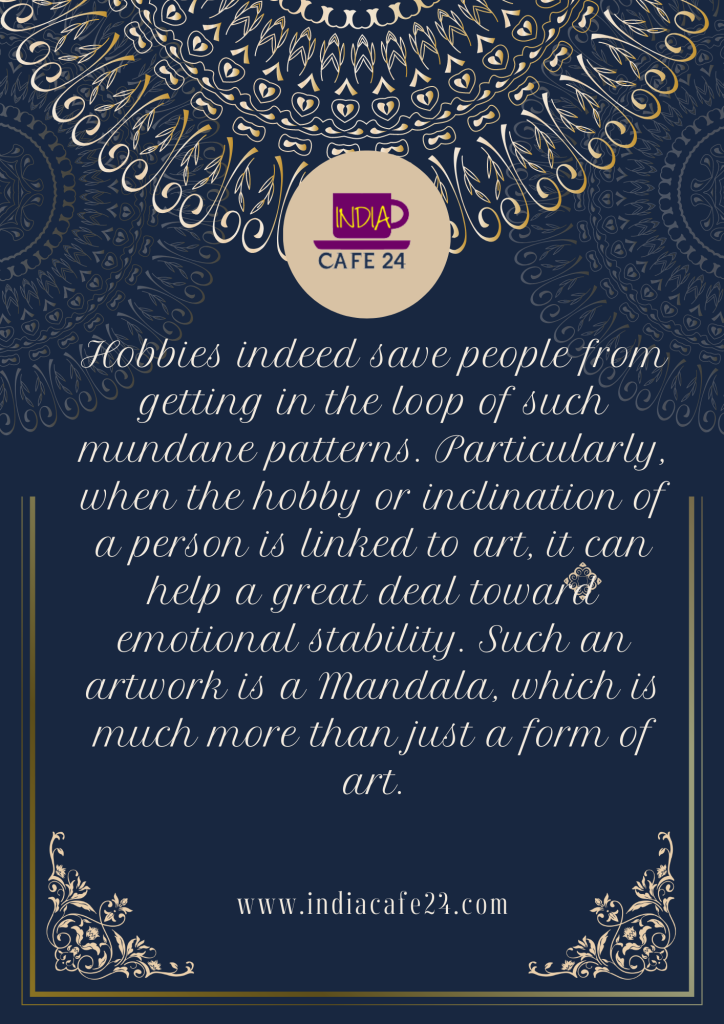

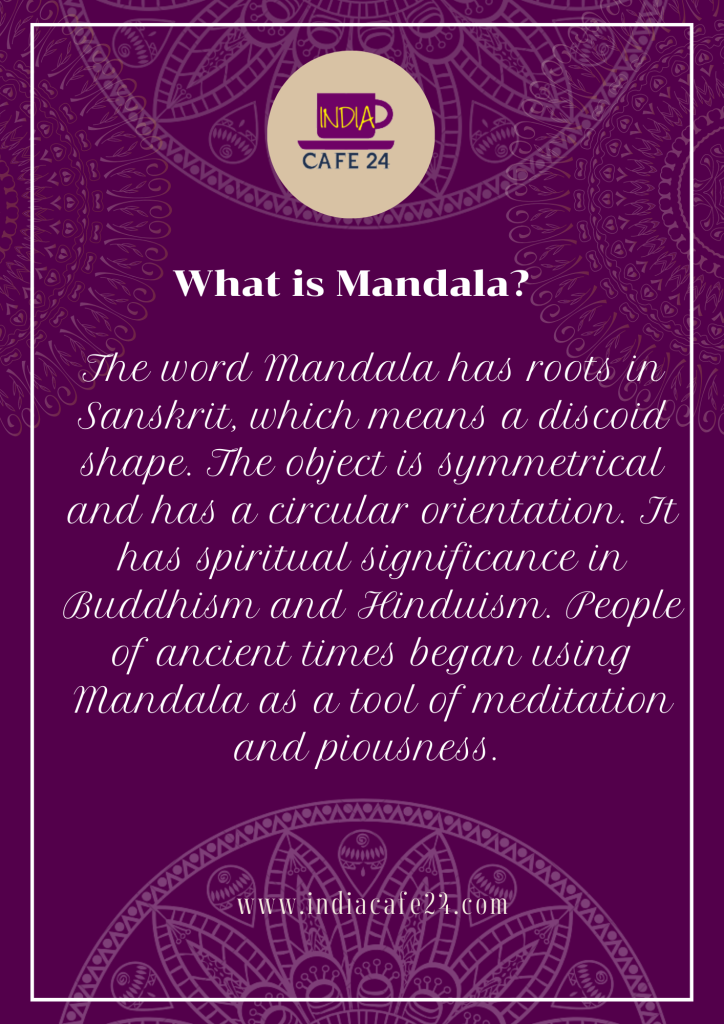

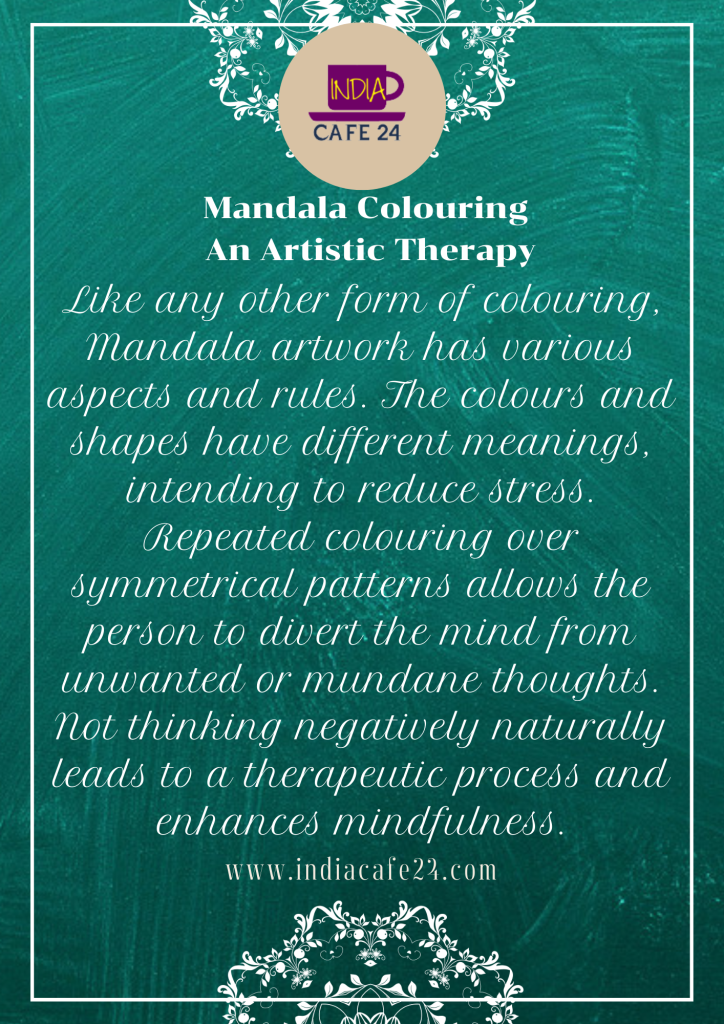

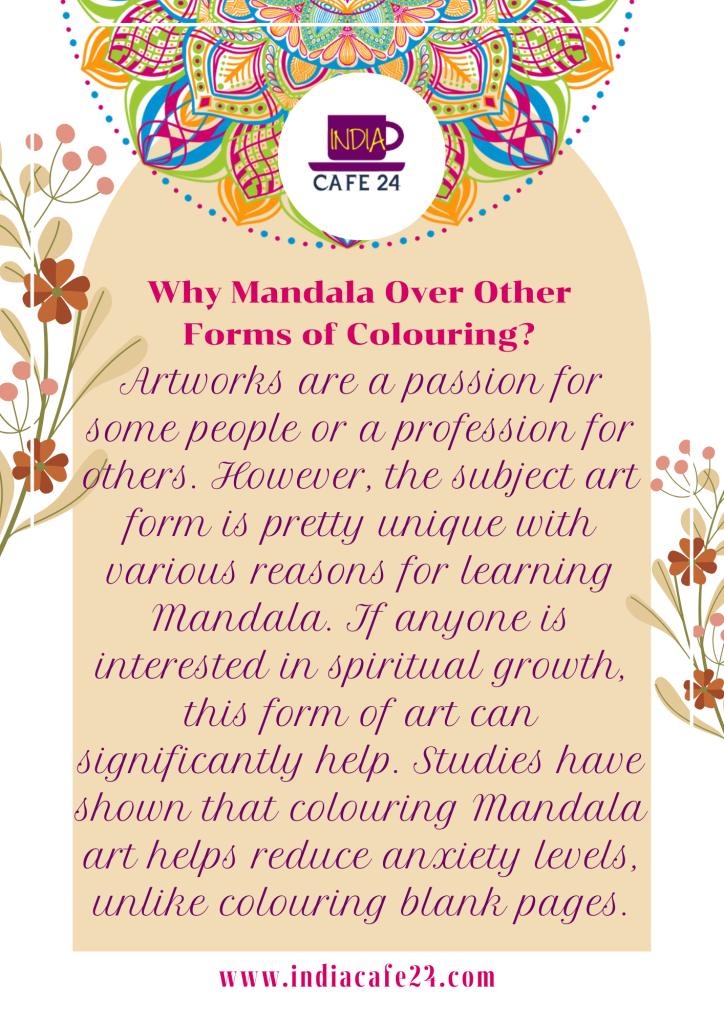
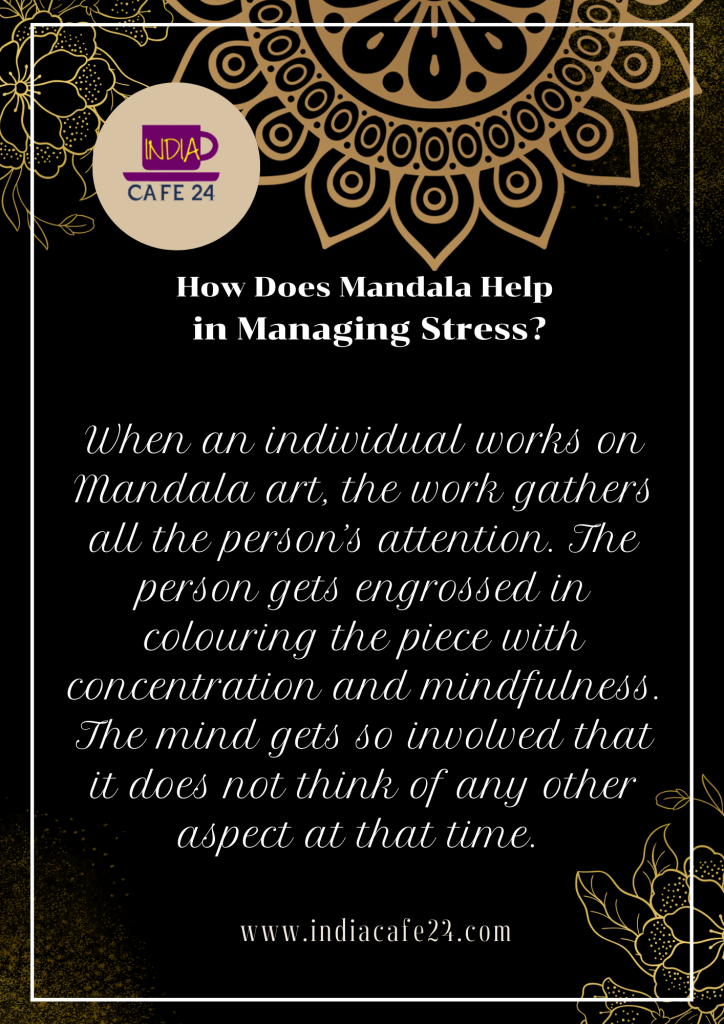
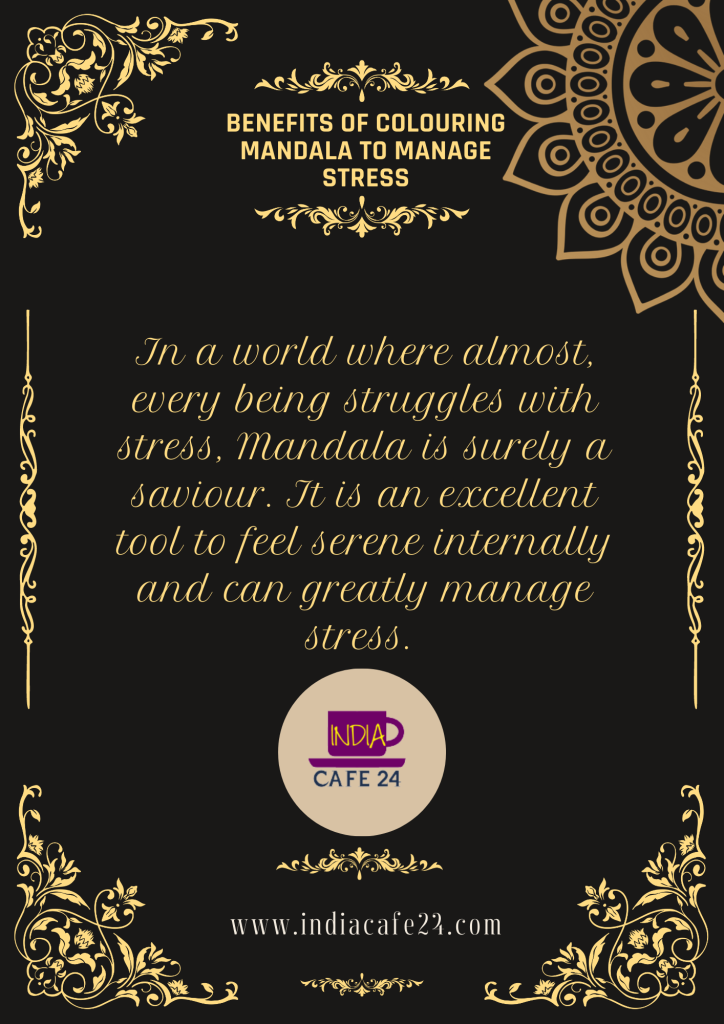
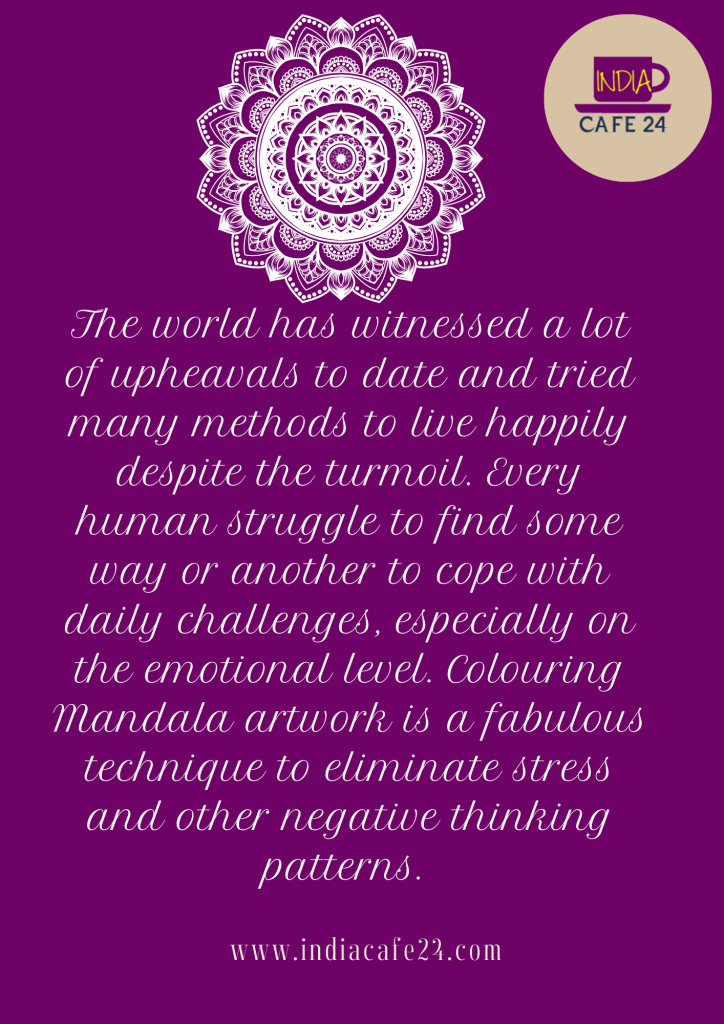
This is such a detailed and informative post. Thanks for sharing. Of course Mandala art for healing has become very common today but I didn’t know the details.
I like mandala therapy too. I even did a workshop for this. However, I realised that I liked free flowing art more than geometrical patterns and connected more to the universe with watercolours. Since then, I try to make free flowing mandalas with watercolours in the outdoors, watching the natural mandalas of flowers and trees.
I first saw Mandala art when watching a documentary about Tibetan monks. After that this art form became famous for improving concentration, creativity, and stress release got to know a lot more about this art form through your post, well done!
I always admire the mandala art that my friend does and it was intriguing to me but I had know clue that it is a proven healer. what an informative post Samata. After reading it, I too feel like learning it or arleast trying my hand at it but the reason I havent so far is cuz i find the patterns too rigid and we have to conform to it… i wish it were more fluidic. This is just my thought but with all the positive info u have shared i do wanna try. Thanks for this ‘elightement’… it is truly 💖
Your posts are so colourful and elaborate, Samata. The pains you take to make the text graphics, hats off. Somehow I have not been able to do mandala. Yes, painting is therapeutic but I find it too intricate. I prefer my freestyle drawing and painting.
Samta, your talent knows no bounds! Each new post you share reveals a fresh layer of your artistic abilities. It’s truly remarkable how your passion for mandalas has enlightened not only yourself but also others, like my daughter and me, who were unaware of the depth and intricacy involved in creating these beautiful designs. My daughter love doing mandala .Your ability to vividly describe how your experiences have influenced your color choices, brush strokes, and creative thought process is absolutely captivating. It’s evident that every step you’ve taken on your artistic journey has contributed to your growth and evolution as a painter. Your passion and talent shine through every word, and I can’t wait to see what beautiful creations you’ll grace us with next! Keep motivating us like this.
Hobbies indeed help you grow and calm you down. I recently painted my first Mandala on canvas and the entire experience was so much calming, peaceful and joy which the end result gives is amazing.
I’ve always been curious about mandala artwork. It’s a great way of art and expression for me and no matter what the canvas is (body/paper), it always grabs my attention. I’d love to try this soon!
I have heard so much about mandalas but never got around to it. Maybe because my creative juices are tapped elsewhere. As always, your post is packed with information about the history, colors, styles, and all. Thanks so much.
My daughter has told me about mandalas. The pictures of the ones you have shared are so beautiful. I didn’t know that the colors had significance because I have only seen them in blue or black. Thank you for sharing about it.
wow, have never known so much about mandala art. The way you explained the different colours, shapes and their contribution to mind fullness was awesome.
Great writing! Your post are detailed, insightful and interesting. Mandala artwork has ancient origins and is found in various cultures worldwide. With repetitive patterns and intricate designs, the Mandala originated in India as a spiritual and ritualistic symbol, representing the universe and wholeness. It later spread to Buddhist and Tibetan traditions, where it was used for meditation, healing, and personal growth. I have tried my hand at it and enjoyed the process. It’s engaging with a sense of focus and mindfulness and definitely helps calm the mind, reduces anxiety, and encourages relaxation.
I wish I could be one those people who managed stress in a productive manner. Like drawing Mandala as you have shared! Some people go for a run or organize the house. I instead sulk and eat until my stomach is ready to burst. I really need to channelize my stress more effectively.
I find craft & gardening therapeutic. I bought a mandala coloring book but haven’t started on it yet. Such a detailed post about the significance & the colors. Will definitely help influence what I make. Thank you for such a detailed post.
Wow the post is so detailed and we’ll written. I have seen people doing mandala colouring or making it but didn’t know the information behind it all.
I love seeing Mandala drawings. A friend of mine is excellent at this and it is just surreal to see her draw. And for her, it is more of a stressbuster. I never knew about the color significance though. Thank you for sharing such amazing insights.
WOW! This is such an in depth read on Mandala Art. I never knew there was so much to learn on this topic. It’s amazing how these patterns are used in so many cultures and religions! I’m looking forward to trying out some of the techniques described here. Thanks, IndiaCafe24, for bringing us such valuable knowledge! 🙂
This article is impressive from the title to the root cause. I find it informative, entertaining and knowledgeable all together. Above all, I got to know a unique skill about you. It is quite delighful. I agree with you that it helps in eliminating negatuve thoughts because I experienced it. Just a sight at the mandala art renders calmness and stillness in the milieu. I personally adore the art forms of mandala. I don’t know how to do mandala art but would love to devote my time to such a fantasctic art.
The post is so detailed I love seeing Mandala drawings. A friend of mine is excellent at this and makes mandala books
The design is so intricate it soothes your soul
Mandala artwork: a serene stress-reliever. Delve into intricate designs, find solace, and channel emotions into beautiful creations. Truly therapeutic.
What a detailed post! I always thought mandala art looks beautiful but I didn’t know that it could be healing too.